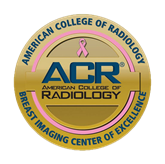Mammograms are performed at our Women’s Diagnostic Center on Northwest Ave. Suite 101, or you may be able to schedule at our Lynden location.
To schedule your Mammogram, please call: (360) 647-2422
Breast Imaging Release Form
What is Mammography?
A mammogram is a low-dose x-ray of the breast. The breast is placed on a device which compresses it, spreading the breast enabling the x-rays to produce a precise image.
Since a mammogram is able to find such small tumors, it will catch lumps long before manual exams or symptoms begin. Catching cancer early increases chances of positive treatment and desired outcomes.
Mammography has an overall accuracy rate of 90 percent and is highly regulated for image quality. Our mammography technologists are required to have extensive specialized training in order to perform these exams. The Women’s Diagnostic Center uses a state-of-the-art low radiation mammography machine which provides your physician with crisp, clear images for highly accurate readings.
Putting your exam off?
Often, excuses may arise in hopes of putting off having a mammogram. Lack of family risk factors, fear of the exam and fear of a positive finding are most common. The FDA reports most positive findings are not cancer, but benign tumors. Special tests such as biopsies are used to discern whether a lump is cancerous. Delaying the diagnosis of breast cancer does not change the diagnosis, it only increases your risk of a worse outcome, possibly death.
Who needs a mammogram?
All women should receive a mammogram by age 40 in order to establish a baseline. This baseline mammogram should be followed up every one to two years until age 49. At age 50, the American Cancer Society recommends annual exams. Younger women who have a high incidence of breast cancer in their family should set up a personal mammography/exam regimen with their doctor.
What can I expect?
The technologists at the Women’s Diagnostic Center will work with each patient in order make this exam as comfortable as possible. Some mild discomfort may be experienced. This can be minimized by scheduling the mammogram just after the menstrual period ends and by avoiding caffeine one to two weeks prior to the exam.
Typically, the technologist will take two views of each breast, one from above and one from the side. The entire procedure takes about 20 minutes. Films taken at Mt. Baker Imaging are read by our specialized radiologists.
If the radiologist decides further pictures are needed, there is no need to panic. The vast majority of lumps found are non-cancerous, although it is important to find those that are so that treatment may begin as early as possible.
Breast Cancer Risk Assessment Tool:
The Breast Cancer Risk Assessment Tool is an interactive tool designed by scientists at the National Cancer Institute (NCI) and the National Surgical Adjuvant Breast and Bowel Project to estimate a woman’s risk of developing invasive breast cancer.
What is 3D Mammography?
3D mammography is a new FDA-approved imaging technology designed for early breast cancer detection and is done along with a 2D mammogram.
During the 3D part of the exam, the X-ray arm sweeps in a slight arc over your breast, taking multiple breast images. A computer then produces a 3D image of your breast tissue in one millimeter sections, providing greater visibility for the radiologist to see the inside of the breast in improved detail. The radiologists can scroll through the images of your entire breast like pages in a book.
The additional 3D images make it possible for our radiologists to better visualize your breast tissue and to detect potential abnormalities, greatly reducing the need for follow up imaging.
What are the advantages?
- Earlier detection of small cancers that may be hidden in a routine mammogram.
- Better at determining size, shape, and location of abnormalities.
- Less biopsies and additional exams.
- Better able to detect cancer in multiple parts of the breast.
- Improved separation of dense tissues.
Who can have a 3D mammogram?
The exam is approved for all women who would be undergoing a standard mammogram in both the screening and diagnostic setting. Mt. Baker Imaging offers 3D technology for all screening mammograms.
What should I expect during a 3D mammogram?
Your 3D mammogram experience should be very similar to previous mammograms at our office. A 3D mammogram complements standard 2D mammography and is performed at the same time. No additional compression is required, and it only takes about four seconds! Our helpful technologists will guide you through the process every step of the way.
Is 3D mammography covered by insurance? How much does it cost?
3D mammography is covered by insurance companies. Patients are encouraged to call their insurance carrier with exam code 77063 for exact benefits.
